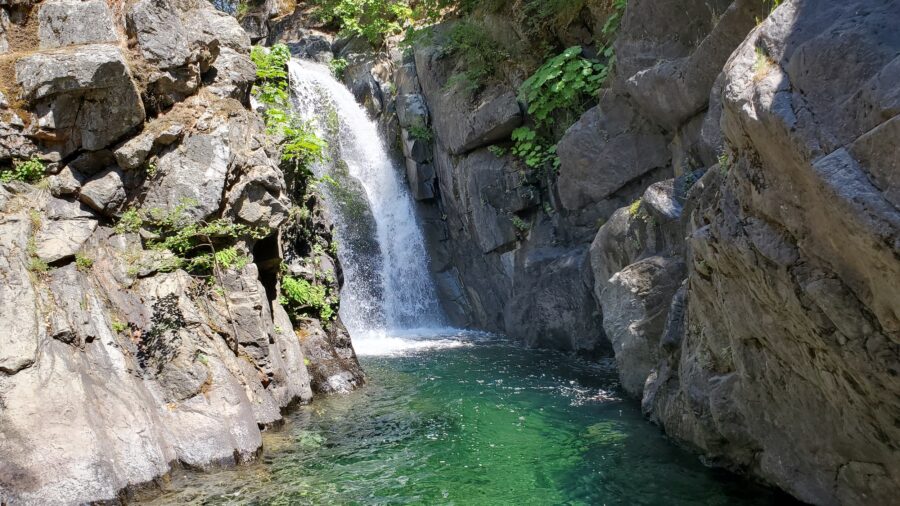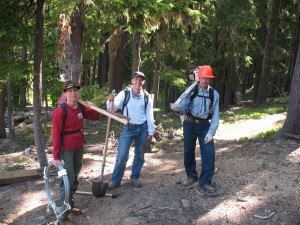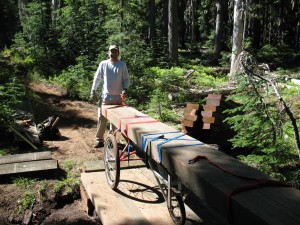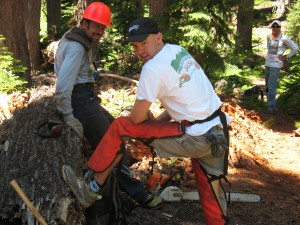While this is a regional post and might only be applicable to Oregonians, you might find something similar in your local forest. Or, if you’re really dedicated you can come up to Oregon for a long weekend.
Instead of showing up at trail work parties with your gloves, lunch, and enthusiasm, then waiting for somebody to hand you a tool and tell you what to do, how about getting some skills so you can lead a project or become more knowledgeable and more effective when you join work parties.
There are two upcoming weekends in the Willamette and Deschutes National Forests in the Oregon Cascades for you to gain skills in tread design, drainage, rock work, CPR, trail stewardship, etc, or to obtain cross cut and chainsaw certification or recertification: May 14, 15, 16 in Westfir, Oregon (near Oakridge) and June 4, 5, 6 in Allingham, Oregon (near Sisters).
The Pacific Crest Trail Association, The High Cascade Forest Volunteers and the Willamette and Deschutes National Forests invite you to attend the annual volunteer training weekend. The sessions offered are designed to train new and returning volunteers. The training weekend offers the opportunity to meet other people who are interested in working to provide quality recreation experiences for forest visitors.
The hours you spend at the training sessions, all the hours you spend volunteering for projects and your travel time to and from the training and projects are valuable to the Forest Service and the Pacific Crest Trail Association.
Click here to sign up for either of the weekends. You must register by April 15 and May 7 for the respective weekends. It won’t cost you any money.
Maybe I’ll see you at Westfir.





